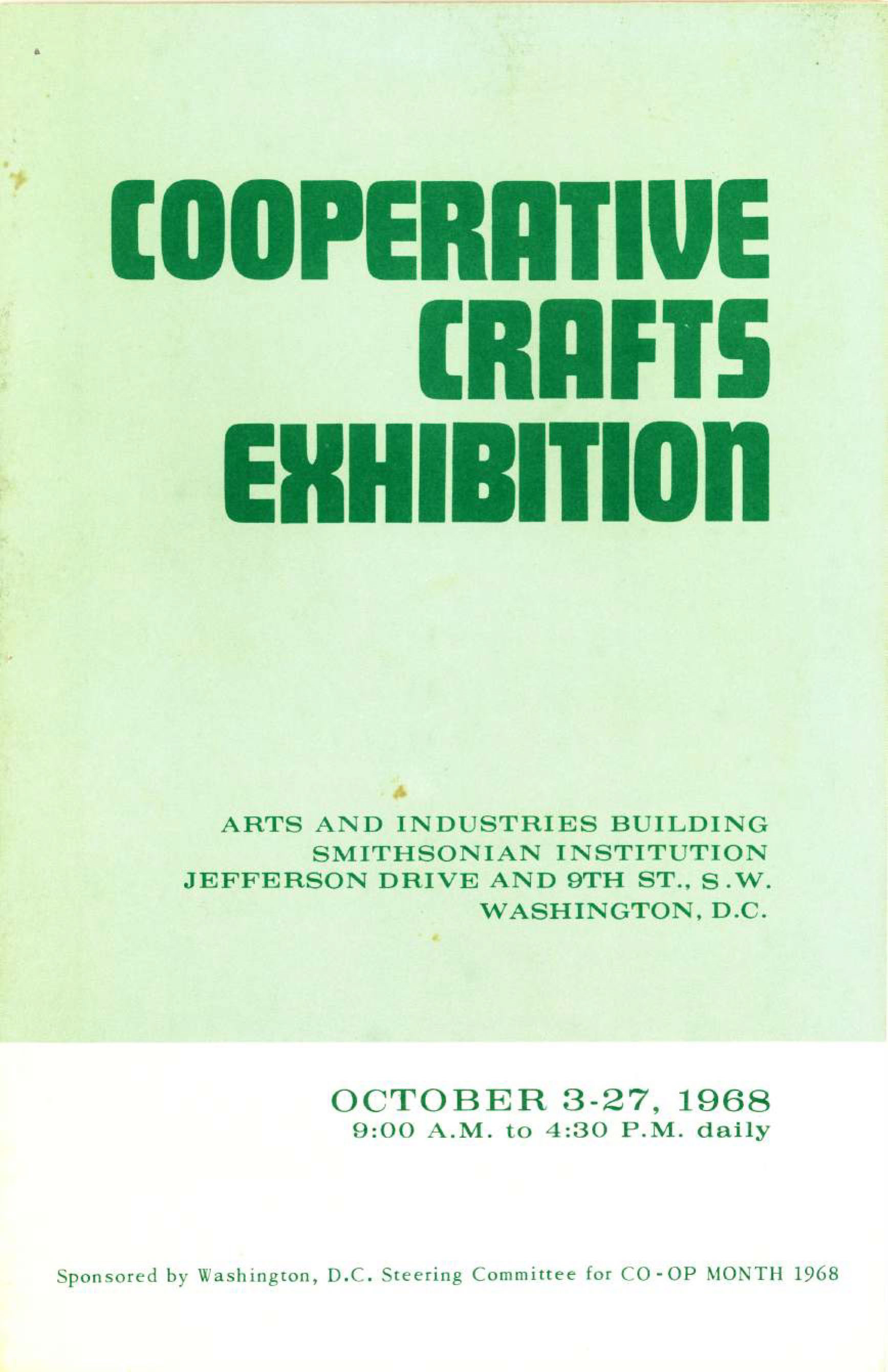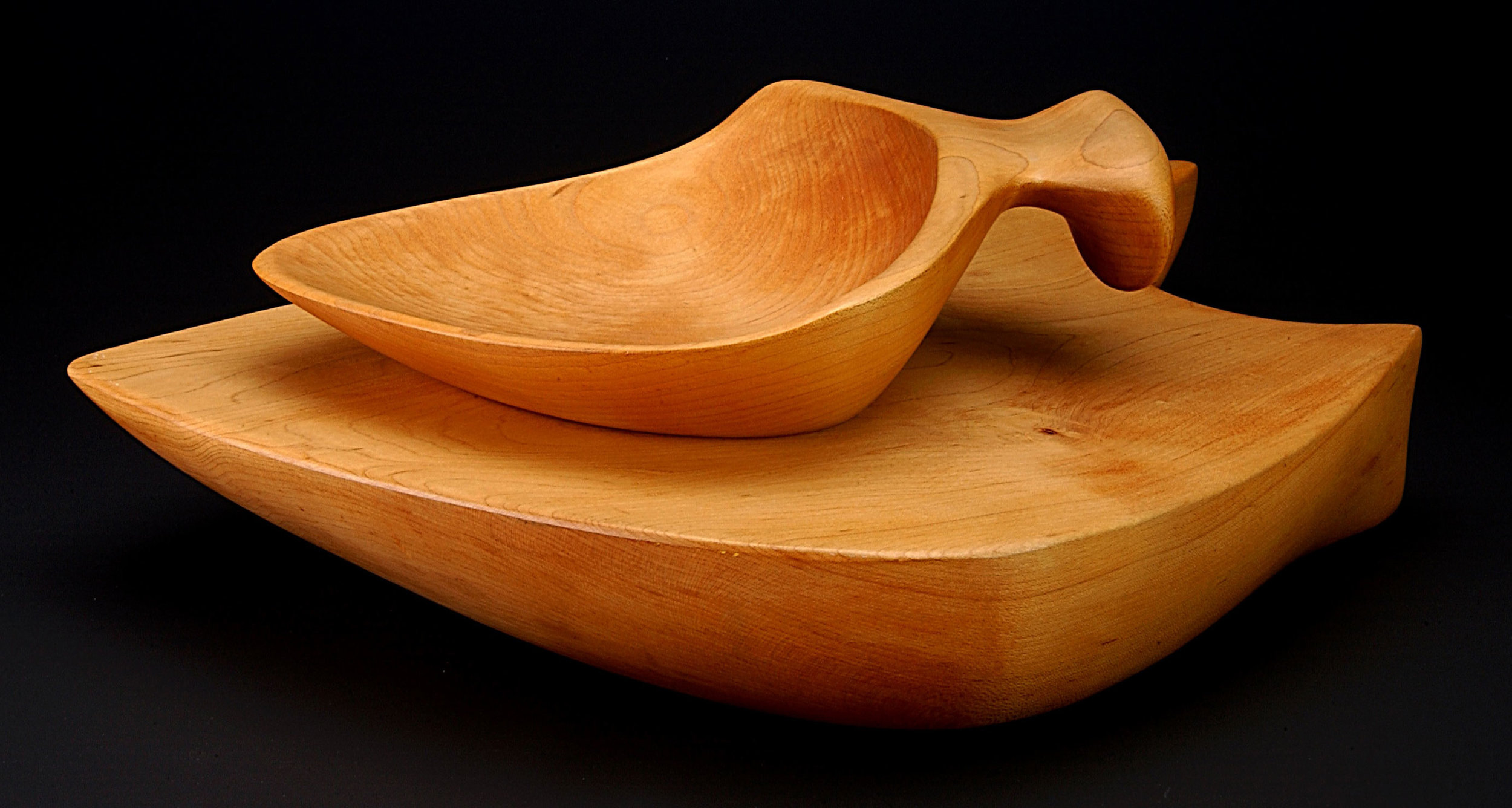Milan was involved in the Smithsonian Institution’s earliest efforts to promote and build a collection of American Craft. He was an exhibitor and demonstrator at the Cooperative Craft Exhibit in October 1968. He was juried into Smithsonian Institution's landmark Craft Multiples exhibit in 1975. His cutting board and integral scoop from that traveling bicentennial exhibit are still on display in the Luce Foundation Center.
EXCERPT #1 FROM EMIL MILAN: MIDCENTURY MASTER:
Cooperative Craft Exhibit
In October 1968, Milan participated in the Smithsonian Institution’s Cooperative Craft Exhibit in Washington, D.C. (fig. 116) These exhibits were "cooperative" in several different ways. They were a joint effort of the USDA and a consortium of federal agencies to support America's Cooperatives--that is, organizations run by their members. October, in fact, had been declared to be "Co-Op Month." The focus here was on craft co-ops, associations, and guilds that marketed their members’ handmade products. It was also a cooperative effort between the federal government and craftspeople to promote distinctively American craft traditions across the country. The first Cooperative Craft Exhibition had been judged a success the year before in 1967. This was the second such exhibit hosted by the Smithsonian Institution at their Arts and Industries building.
EXCERPT #2 FROM EMIL MILAN: MIDCENTURY MASTER:
In November 1974, the Smithsonian Institution issued a call for a national competition in American craft that involved the production of multiples. Designs for the "Craft Multiples" exhibit had to be individually made in production of at least 10 copies, but not mass produced by machine or other artisans. The works had to be "…always under the control of the craftsman," they stated. More than 25,000 entry forms were distributed to craftspeople across the country. One ended up in the hands of Emil Milan.
On January 1, 1975, Emil requested an entry form from exhibit coordinator Miriam Plotnicov. "I do a lot of carved multiples," he said. "I feel I should try for the show." And try he did. He followed up a few weeks later by submitting a carved hard maple cutting board with an integral scoop. When not in use, the scoop fits into a compartment on the underside of the thick cutting board. To be perfectly clear, he included a sketch of how the two pieces fit together.
EXCERPT #3 FROM EMIL MILAN: MIDCENTURY MASTER:
Both the range and the excellence of the final selections were impressive. The exhibit catalog has many pictures of superb pottery, basketry, furniture, woodworking, stained glass, blown glass, weaving, quilting, toys, dolls, jewelry, silver, and even handmade kites. The jury felt that each piece had a distinctly American flair. Among woodworkers, Emil was in elite company that included Bob Stocksdale, Rude Osolnik, David Ebner, Wendell Castle, and Art Carpenter.
Ms. Plotnicov's essay for the catalog, entitled "Production Craftsmen Today," featured a picture of Emil's cutting board and scoop. She quoted his longstanding dogma, "It doesn't matter what tools I use, whether it's hand tools or power tools. The method shouldn't show." She agreed quite emphatically. "Ultimately, it comes down to that," she said. "The method should not show, and when it does the craftsman has failed." Another familiar quote of Emil's appears toward the end of the catalog: "Because it has been a living thing, wood carries its natural warmth into whatever you make from it."


Craft Multiples, 1975

Emil’s maple cutting board and scoop from the Craft Multiples exhibit.
Cutting Board and Scoop, 1975
Maple 2 7/8 x 19 1/8 x 10 3/4 in. (7.3 x 48.6 x 27.3 cm)
Smithsonian American Art Museum, Museum purchase 1975.172A-B | Smithsonian American Art Museum, Luce Foundation Center, 4th Floor, 54B | Courtesy the Smithsonian Institution)
